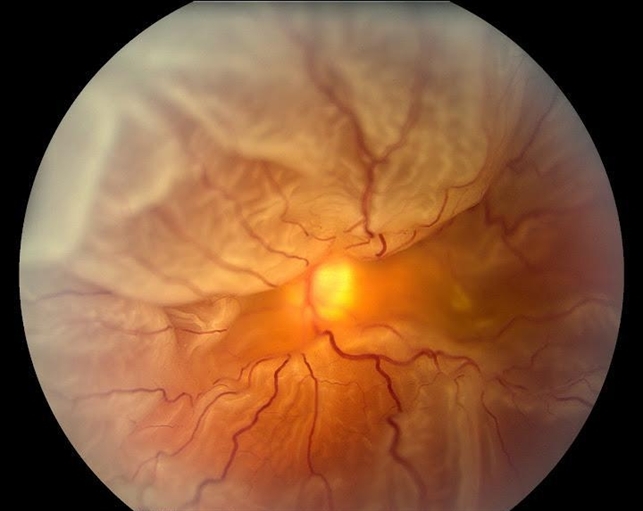
A retinal detachment usually when there is pulling on the retina, which causes a tear to occur. Causes of retinal tears are multiple, and include trauma, genetic predisposition, myopia (near-sightedness), to name a few.
A retinal tear should be evaluated by a trained retina specialist, and can usually, and successfully, be simply treated in the office.
A retinal detachment is a more complicated problem, and a well- trained retina specialist can offer you different ways of treating this potentially blinding condition.
In some cases, an office-based procedure called a pneumatic retinopexy can be offered; with appropriate selection of the patient, success rates of up to 80% can be achieved. In the office, a gas bubble is injected into the eye; and either the same day, or maybe a few days laser, laser or cryotherapy is applied. Your retina specialist should discuss with you his or her experience level with this procedure, success rates, and experience levels with the other options, that may be available.
Another method to treat retinal detachments, as seen under the video section of NaderMoinfarMD.com, is a procedure called a vitrectomy. Generally speaking, the vitreous, which is the clear jelly of the eye, is the cause of a retinal tear and traction. By removing the vitreous, one removes the underlying cause. A vitrectomy for a retinal detachment must be careful and completely done, to ensure the greatest chance of success. A seen in my videos, the vitreous is removed, and following a procedure termed an air-fluid exchange, laser is applied around the tears, and finally, the space is filled with a gas bubble.
Lastly, your retina specialist may advise alone, or in combination with a vitrectomy, a procedure termed a scleral buckle; this, too, can be viewed on my video section. With this procedure, a very thin band of silicone is secured on the outside, white part of the eye, helping to relieve the internal traction on the retina; cryotherapy, and a gas bubble, are also used.
With almost all cases of retinal detachments, you will be required to keep your head and body in a certain configuration for a short time; this allows the gas inside your eye to push up against the detachment, allowing it to heal, or “stick’ down. Please note that when the gas bubble is in the eye, you should not travel by air, go up to certain altitudes, and must avoid certain types of general anesthetic inhalation agents if having surgery. Your retina specialist should provide you with a green wrist band to remind you, and others, of this precaution.
If you want to make an appointment, please call us (877) 245.2020.
